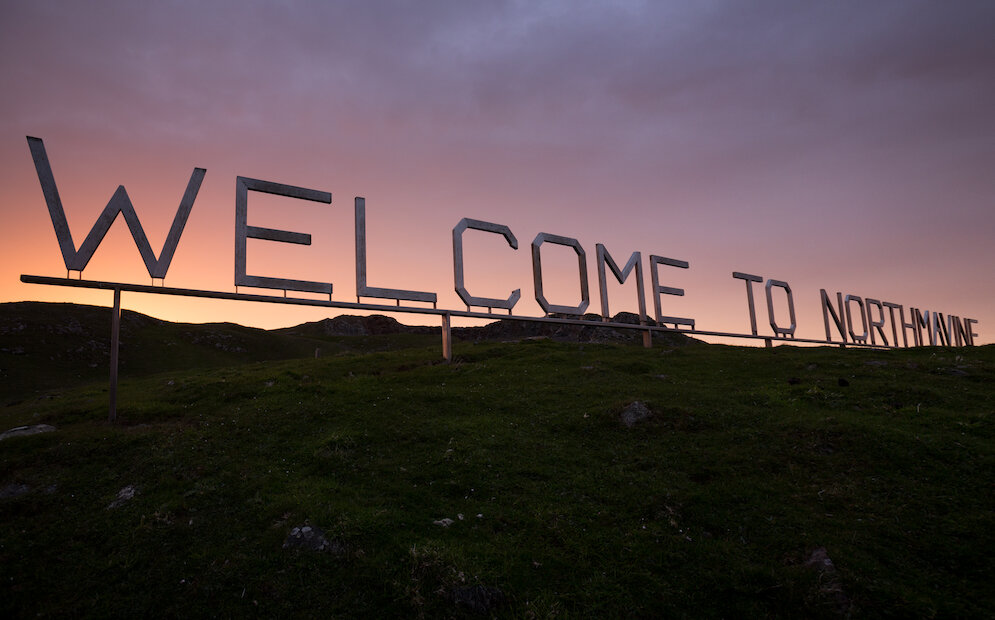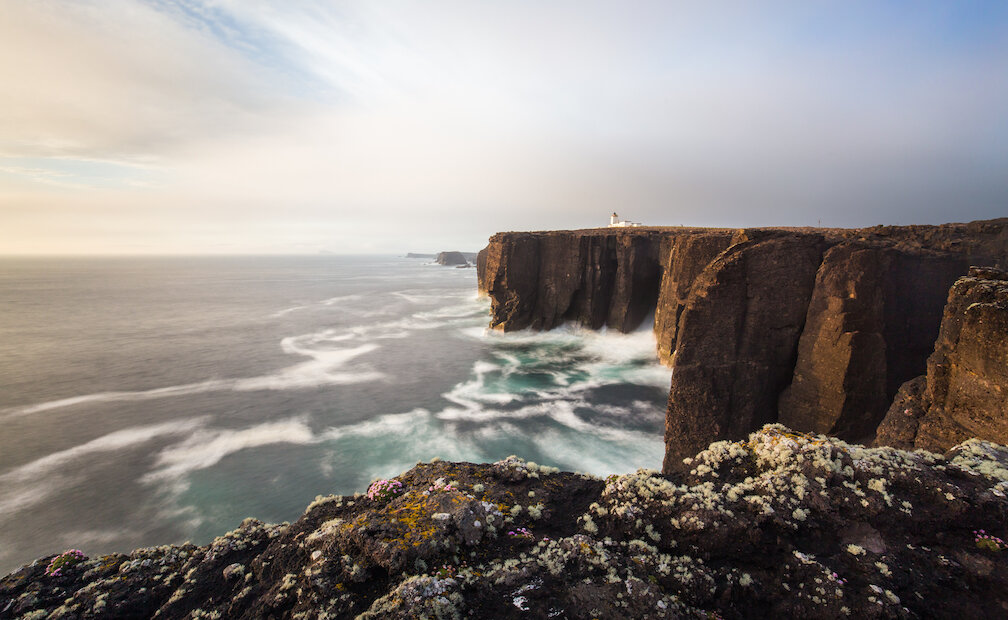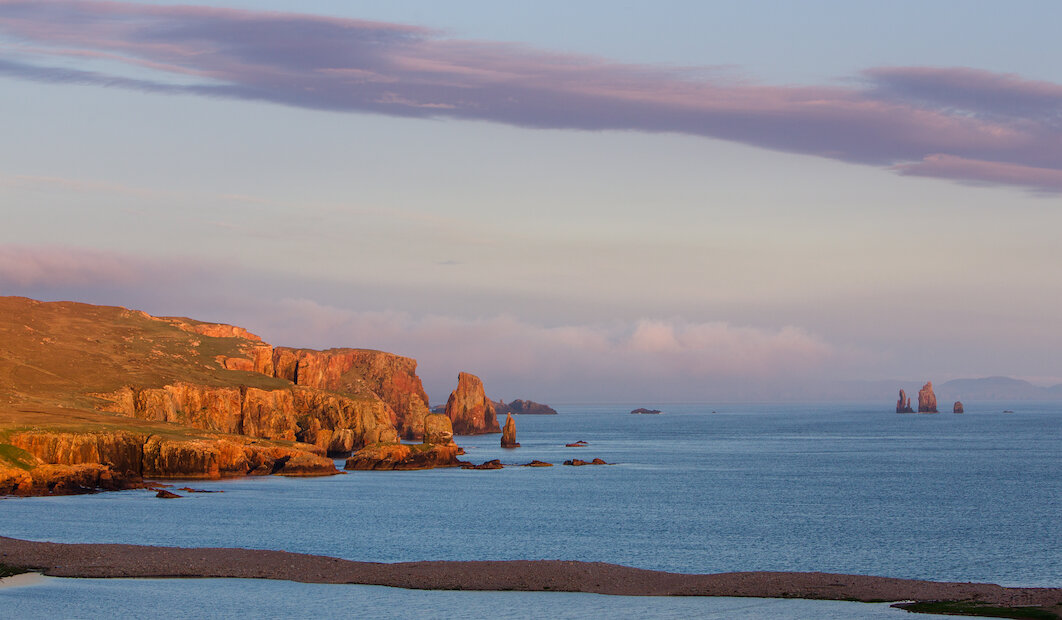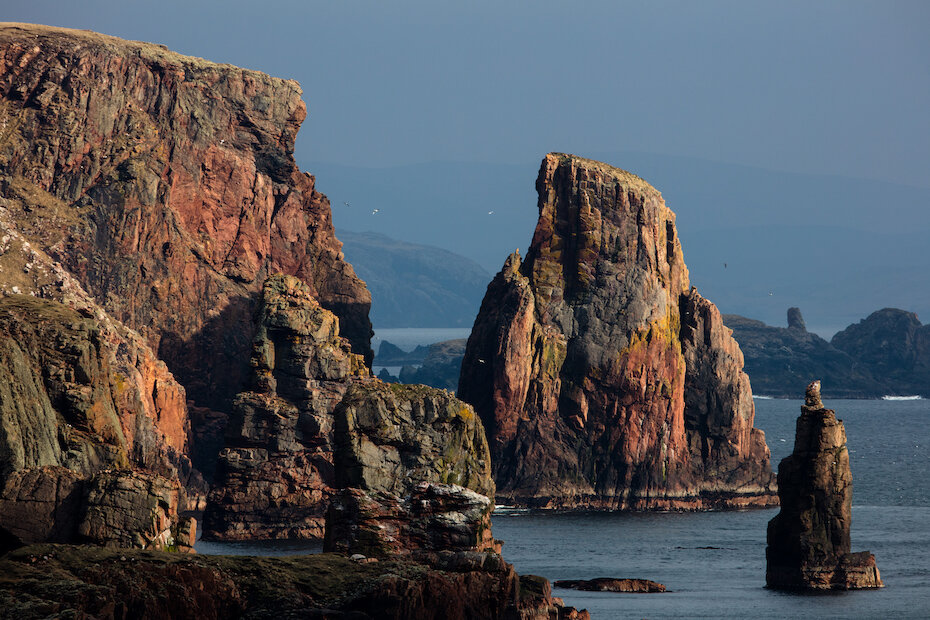Things to do
Admire the views from Ronas Hill
From Mavis Grind you enter a vast and magical landscape dominated by Shetland's highest hill, Ronas Hill (1475ft/450m), topped by a prehistoric chambered burial cairn. The summit has a sub-Arctic climate, with patterns created by freezing and thawing in the stony soils and some rare Arctic/Alpine plants.
The view from Ronas Hill is on an epic scale, showing all of Shetland and in exceptionally clear weather even the top of Fair Isle. To the north lies an ice-carved wilderness of low hills and dozens of freshwater lochs – including some of the best trout fishing in Shetland.
To the north-east are the jagged rocks of the Ramna Stacks, with background silhouettes of the Gloup Holm in North Yell and the Muckle Flugga rocks north of Unst.
An entirely different landscape opens to the south-east over the scattered islands and bays of Yell Sound and Shetland's largest sea loch, Sullom Voe. Well beyond them are Skerries, Whalsay, Noss and Bressay, while in clear weather the noble outline of Fitful Head is visible, 43 miles (70km) to the south.
Foula's outline rears out of the ocean to the south-west, while just across St. Magnus Bay are Papa Stour and the Ve Skerries reef. Immediately below Ronas Hill is the fjord-like inlet of Ronas Voe, fringed by stupendous cliffs, offlying stacks and magnificent beaches such as Da Lang Ayre.
Walk the cliffs at Eshaness
The cliffs at Eshaness are one of the most dramatic sights in Shetland, particularly when there's plenty of swell in the sea crashing against the rocks. The cliffs themselves are between 350 million and 400 million years old and were carved when volcanoes erupted, revealing layer upon layer of lava and volcanic ash.
Geological highlights to look out for include 'The Drongs', a dramatic group of sea stacks, and the incredible 'Dore Holm' rock arch. Near Eshaness Lighthouse is Calder's Geo, a deep dark rocky cleft cut into the rock stretching back from the sea. You'll also find the Holes o' Scraada ('Devil's Caves'), a series of collapsed caves, and the Grind o' da Navir ('Gate of the Borer'), where stormy seas have smashed a great hole in the sea cliff wall and thrown thousands of tons of rock through the gap.
View a circular walk of Eshaness in our Walking section. You can also find more walks in the area on the Northmavine website.
Loch fishing
There are several lochs in the area for keen anglers. The roadside lochs of Haggrister, Punds Water and Eela Water are worth an hour or two on the way past. If you are a hill walker with a trout rod, the ultimate day out will be a trip to the Ronas Hill lochs – remember not to pass even the smallest of ponds, anglers have been surprised before! See our Angling page for more information on fishing in Shetland.
This former laird's house offers a fascinating insight into the history of Northmavine and the people who lived here. The Laird’s Room gives you an idea of what the room would have looked like in the 19th century and is filled with Victorian artefacts, while the Reception Room displays tools and household objects from the period. There are also exhibits relating to the area’s crafting and fishing industries.
You'll also find toilets and tea and coffee making facilities at the museum, as well as WiFi and local tourist information.




